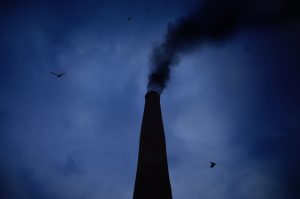Black carbon
Black carbon is a contamination resulting from the incomplete combustion of fossil fuels, biofuels, and biomass (wood, animal dung, etc.). It is the most potent climate-warming aerosol. As the name suggests, black carbon is a dark particle which absorbs sunlight very efficiently.
The largest black carbon emission sources in the Arctic are agriculture burning and wildfires, on-road diesel vehicles, followed by residential burning, off-road diesel and industrial combustion. Gas flaring may currently be a significant source as well. The burden of atmospheric black carbon has been found to result from long range transport from the Former Soviet Union, Europe, North America and East Asia.
Black carbon properties and consequences:
- Absorbs strongly solar radiation and exerts a warming of the atmosphere
- Light absorption is enhanced on the reflecting snow and ice surfaces
- Deposited black carbon particles darken the snow and ice, lowering albedo
- Has a short life-time in the atmosphere (days to a week) compared with greenhouse gases like CO2 – this means it could be easily avoided
Beyond environmental and climate hazards, black carbon also has a direct health effect on residents of the north, causing respiratory diseases.



 This project (EDU-ARCTIC) has received funding from the European Union’s Horizon 2020 research and innovation programme under grant agreement No 710240. The content of the website is the sole responsibility of the Consortium and it does not represent the opinion of the European Commission, and the Commission is not responsible for any use that might be made of information contained.
This project (EDU-ARCTIC) has received funding from the European Union’s Horizon 2020 research and innovation programme under grant agreement No 710240. The content of the website is the sole responsibility of the Consortium and it does not represent the opinion of the European Commission, and the Commission is not responsible for any use that might be made of information contained.